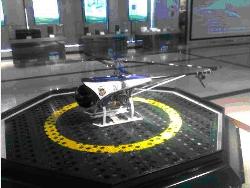Introduction
An IED explosion on June 10th this year, along the Dantewada-Bastar highway, in Chhattisgarh, killed ten CRPF jawans; despite the fact that the patrol was travelling in a mine-proof vehicle (MPV).
An interesting statement popped out of an article recounting the experience of a US infantry battalion attempting to stabilise a district in one of Afghanistan’s restive provinces: Despite enormous U.S. expenditures on counter-IED technology, detection devices accounted for just ten percent of the IEDs that 3/5 detected and disarmed during its time in Sangin.
What the above incidents point to is that, just as law-enforcement and counter-insurgency agencies are employing the use of technology to detect and counter IEDs, insurgents are studying the weaknesses of these technologies to refine practices and develop new methods that retain the lethality of the IED. This brief looks at existing and new technologies being used to counter IEDs.
Existing Technologies
From an interview given by the Chhattisgarh State DGP, Vishwa Ranjan, after the June 10th incident, it seems that Indian law-enforcement agencies use metal-detectors and sniffer dogs to detect and neutralize IEDs. The insurgents respond by burying the IED deeper in the ground – six to eight feet below the ground – to escape detection by these methods; and build bigger IEDs to counter the protection offered by MPVs.
Internationally, the technologies used to counter IEDs are more sophisticated than those stated to be used in Chhattisgarh. These include Jammers, Explosives Trace Detectors (ETDs), Radar, Thermal Imaging, and Directed Energy.
- Jammers:
Jammers were the first use of technology in countering IEDs, through disrupting the triggering system which, initially, was done wirelessly (cellphones, walkie-talkies, key fobs, etc.). Insurgents have switched to a more primitive triggering system, command wires, to counter the jammers and render them ineffective. - Explosives Trace Detectors:
Details of this technology were carried in one of the March 2011 Homeland Security Tech Briefs – Explosives trace Detectors for Homeland Security Applications. The issues with ETDs are related ruggedness of the equipment, packaging the equipment into field-usable systems, and the cost deploying such a systems. - Radar (Software Aperture Radar – SAR):
Used primarily to record change detection on the ground, the SAR will typically be carried by a UAV or a manned aircraft.
The infrastructure required to process images in near real-time and then transmit them to the counter-insurgency forces, in time, is significant. Also, it is still to be seen how well these radars operate when trying to locate IEDs buried underground in arboreal terrain.
 |
| Figure 1: UAV that can host a SAR |
- Thermal Imaging:
Thermal imagers are used by counter-insurgency forces for visibility at night. The imagers can be fitted on vehicles to give a clear view of the road ahead, and to image humans hiding in the vicinity. Thermal imagers allow visibility at night, but it is left to the user to interpret what is visible and take a decision on whether the trail ahead is safe for movement. - Directed Energy:
The devices, using directed energy technology, use a powerful laser or microwave to destroy IEDs or the electronics controlling the IED, respectively.
In the case of lasers, they have been found to be useful only for surface-based IEDs or lightly-buried IEDs, where the identification of a potential IED location is carried out by a human; while, in the case of microwave, the technology is still being refined to ensure that the device does not destroy the electronics being carried by the counter-insurgency forces. In both cases, the packaging of the device into a road-worthy, speedy platform has proven problematic.
New Technologies
Some of the new counter-IED technologies being investigated are Hyper-spectral Scanners, Ground-penetrating Radar, Wave-polarisation Radio Transmission, and Terahertz-frequency Millimeter-wave radiation.
- Hyper-spectral Scanner
This device is used to identify disturbed soil, and potential IED-bearing spots, by analyzing the radiation emitted; on the principle that disturbed soil scatters radiation differently from undisturbed soil. - Ground-penetrating Radar (GPR)
Ground-penetrating radar technology is being investigated to identify command wires and metal-based IED designs. GPR uses radar pulses to image the subsurface; detecting subsurface objects and structures. - Wave-polarisation Radio Transmission
Used to unearth command wires, in this approach, a soldier carries a radio transmitter that sweeps a wide band of frequencies. The radio waves are polarized and when the polarization is aligned with a length of the command wires, the coupling of the RF energy with the wire causes a resonance which indicates the presence and length of the command wire. - Terahertz-frequency Millimeter-wave Radiation
This technology uses extremely high-frequency, small wavelength waves to identify IEDs buried under the ground. The identification can be passive (emissions from the buried device) or active (radiation from the equipment penetrating the ground). Investigations in this area are still in the early stages, and it unlikely that a deployable solution will be available any time in the near future.
Conclusion
There is no dearth of technology approaches to identifying, investigating, and destroying IEDs, as is clear from the above write-up. The problem is to design a solution that is portable (either person-borne or vehicle-borne), not cumbersome to move, and rugged enough to survive field operations; from the point of view of operationalizing the technology. From the point of view of the user, the solution should be easy to use and should allow a stand-off distance that protects the user from any effects of an exploding IED.
A mixture of technologies will be required to handle the variety of IED designs used by insurgents. There is a cost involved in implementing each technology, and whether the cost is something that the country can afford is a decision for the policy-makers to take. All said and done though, going by the experience of the battalion quoted at the beginning of the brief, technology can only assist up to a point. The most effective counter to IEDs is field intelligence, to identify insurgents and IED-buried spots; and specialised training to counter-insurgency forces, to react in a different manner when patrolling territory where IED usage is common.



